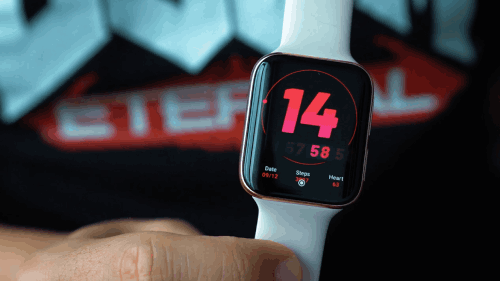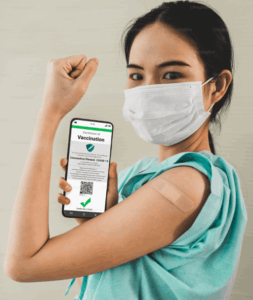In recent years, health apps and wearable technology have become integral tools for improving physical and mental well-being. They track steps and heart rates or offer personalized fitness programs and meditation exercises.
Tech companies have revolutionized how we approach self-care. As more people prioritize wellness, the accessibility of these devices has made it easier than ever to monitor progress, stay motivated, and make informed decisions about health.
In this post, we’ll explore the role of health apps and wearables in physical fitness and mental health, along with the potential challenges they present.
The Role of Health Apps
Health apps have revolutionized how people manage their well-being. For physical fitness, apps like MyFitnessPal and Nike Training Club provide personalized workout plans, track calorie intake, and allow users to set fitness goals tailored to their specific needs.
Users can also monitor their daily activities—such as steps taken, calories burned, or hours slept—helping them develop healthier habits.
Apps can also provide detailed meal logging, macronutrient tracking, and reminders to stay hydrated. Noom and Lifesum offer tailored recommendations based on user preferences and goals, supporting weight loss, muscle gain, or simply healthier eating.
Mental health apps, such as Headspace and Calm, guide users through mindfulness exercises, breathing techniques, and stress management tools. These apps focus on reducing anxiety, improving focus, and promoting better sleep quality through regular meditation and relaxation routines.
Some, like Moodpath or Woebot, use cognitive behavioral therapy (CBT) techniques to help users track their moods and cope with emotional difficulties.
The convenience of having these tools at your fingertips has made health apps indispensable. However, their effectiveness depends largely on user engagement and consistency, as well as the app’s ability to personalize experiences and provide accurate data.
Wearable Technology Advancements
Wearable technology continues to advance rapidly, with devices offering sophisticated features beyond basic activity tracking.
The Apple Watch and the Garmin Fenix 7, for example, provide detailed data on heart rate variability (HRV), blood oxygen levels, and even electrocardiograms (ECG), enabling users to monitor their cardiovascular health closely.
These wearables also have advanced sensors that detect sleep quality, stress levels, and recovery times, helping users optimize their physical performance and overall well-being.
Hi-tech wearables like the Oura Ring have gained popularity for their minimalistic design and comprehensive health insights, including sleep tracking, temperature monitoring, and readiness scores that guide users on when to rest or push harder in workouts.
Additionally, devices like WHOOP have become favored by athletes for their precise recovery tracking and in-depth performance analytics, offering actionable data on strain, sleep, and recovery.
For mental health, wearables such as the Muse headband have introduced neurofeedback technology to help users practice mindfulness and meditation more effectively by measuring brain activity in real time. This data enables users to improve focus and reduce stress through guided sessions.
With each new generation of wearables, the integration of artificial intelligence (AI) and machine learning allows even more personalized insights, adapting to users’ unique habits and health conditions.
How It Works
The effectiveness of health apps and wearables lies in the cutting-edge technology that powers them. At the heart of these devices are advanced accelerometers, gyroscopes, and optical sensors that continuously track and measure various physiological metrics.
These sensors convert physical data—like movement, heart rate, and sleep patterns—into digital information that apps and wearables can interpret and present in meaningful ways.
The data users generate is sent to secure cloud servers, where algorithms analyze trends and provide personalized feedback. AI offers tailored recommendations and predictions based on a user’s unique behaviors. For instance, wearables can predict potential health issues by analyzing deviations in heart rate or sleep patterns, prompting early intervention.
Bluetooth and Wi-Fi connectivity synchronizes wearables with smartphone health apps, allowing real-time data transfer and seamless user experiences. GPS technology, commonly used in fitness tracking apps, enables precise activity tracking for outdoor workouts like running or cycling.
The development and production of these devices often involve collaboration with specialized tech partners who provide expertise in software and hardware design.
Many companies turn to nearshoring solutions to access skilled talent and advanced infrastructure for developing high-quality wearable technology.
A Key Focus for Health Apps and Wearables
While health apps and wearables have proven invaluable in tracking physical fitness, their impact on mental health is becoming even more significant. The constant, personalized support makes them powerful tools for mental health management.
Wearables like the Fitbit Sense and Apple Watch now feature built-in stress tracking, using metrics like heart rate variability (HRV) and electrodermal activity (EDA) to gauge stress levels throughout the day. Combined with guided breathing exercises, users can take immediate steps to lower stress and improve emotional resilience.
For individuals experiencing more severe mental health challenges, cognitive behavioral therapy (CBT)-based apps such as Woebot provide AI-driven conversations that offer evidence-based guidance to manage anxiety and depression.
This accessibility ensures that support is available 24/7, making mental health care more manageable and less stigmatized. As mental health continues to become a global priority, the integration of advanced technology into everyday wearables is an essential step forward.
Whether it’s guiding mindfulness practices, detecting early signs of stress, or fostering daily relaxation habits, these digital tools serve as a bridge to better mental health outcomes—empowering individuals to proactively care for their well-being, wherever they are.
Image Source:





